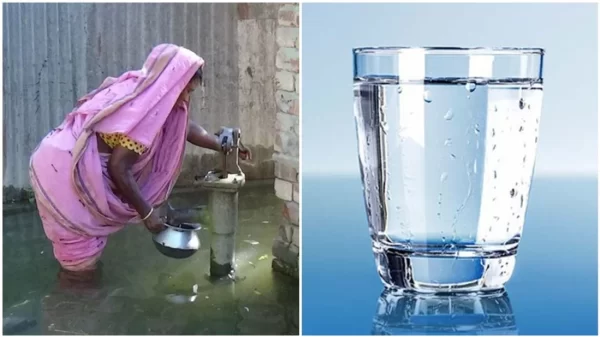

In areas affected by severe floods, various harmful chemicals, fuels, and bacteria like pollutants are spread in large quantities with the flood water. As a result, drinking water is full of contaminated flood water for a long time. Therefore, it becomes necessary to purify drinking water for health protection during this period.
In this regard, pharmacist Sadia Siddiqui has told about some ways of purifying drinking water. Let’s find out-
Boiling water-
Boiling water kills disease-causing organisms including viruses, bacteria and parasites. Boiling this water can be done in different ways.
When the water starts to boil, first strain it with a clean cloth, paper towel or coffee filter and allow the boiling water to settle. The clean water thus obtained should be boiled again for one minute. After the boiling purified water has cooled, it should be stored in a clean sanitized container with a tight cover.
Boiled water can be poured from one pot to another and waited for several hours to improve its taste. Also adding a pinch of salt to every liter of boiled water can improve the taste.
Use of chemical disinfectants-
If boiling water is not possible, small amounts of water can be made safe to drink by using chemical disinfectants such as odorless chlorine bleach, iodine, or chlorine dioxide tablets. They are available in various sizes and are designed to treat specific amounts of water.
Disinfectants can kill most harmful or disease-causing viruses and bacteria. But this method is not effective for killing more resistant bacteria such as Cryptosporidium and Giardia. Boil water for this.
However, chlorine dioxide tablets can kill Cryptosporidium. But this requires following the manufacturer’s instructions on the label or package of the tablet exactly.
Adding a disinfectant to the water will make it undrinkable if it contains harmful chemicals or radioactive material. Water disinfected with iodine is harmful to pregnant women, people with thyroid problems, or those hypersensitive to iodine. It is also not recommended to use it continuously. Can be used for a maximum of a few weeks at a time.
Purification through filters
There are some portable water filters that can remove disease-causing parasites such as Cryptosporidium and Giardia from drinking water.
Most portable water filters do not remove viruses and bacteria. So be very careful in filter selection. The filter pore size should be small enough to remove more resistant parasites.
Sizes that are about a micron or smaller. When using a water filter, carefully read and follow the manufacturer’s instructions on the label.
Disinfectants such as iodine, chlorine or chlorine dioxide may be added to the filtered water to ensure the destruction of viruses and bacteria after filtering.
Distillation process-
Water boils at a lower temperature than other contaminants and disease-causing substances in water.
In this method, water has to be heated until it reaches boiling point. It is then kept boiling until it evaporates. A condenser is used to cool this vapor. After cooling, the steam turns into clean and safe drinking water. Other substances with higher boiling points are left in the container as sludge.
This method is effective in removing bacteria, germs, salts and other heavy metals such as lead, mercury and arsenic. Distillation is the standard method for raw and untreated water. This approach has both advantages and disadvantages. A significant disadvantage is that it is the slowest process of water purification.
However, a heat source is required to perform this purification task. Although a variety of inexpensive thermal sources have been developed, water purification by distillation remains an expensive process. It is cost effective in purifying small amounts of water. This method is not ideal for water purification on a large scale, commercial or industrial scale.
Leave a Reply